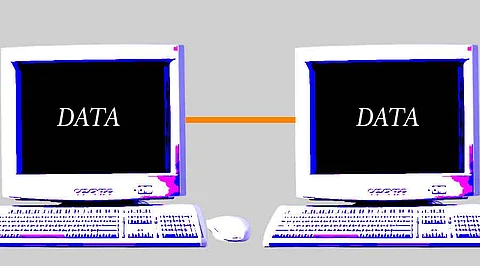
- Insights
- Cryptocurrencies
- Gadgets
- Stocks
- White Papers
- Reports
- Industry
- Geography
- Insights
- Cryptocurrencies
- Gadgets
- Stocks
- White Papers
- Reports
- Industry
- Geography


The process of transferring data from one system to another is called data migration. Even if it seems simple enough, there is a storage, database, or application update involved. Any data migration will entail at least the transform and load phases in the extract/transform/load (ETL) process. This implies that before extracted data can be placed into a target location, it must first pass through several preparatory processes. Data migrations are carried out by organizations for various purposes. A complete system overhaul, database upgrades, the creation of a new data warehouse, or the integration of fresh data from acquisitions or other sources can all be necessary. Data migration is also required when installing a new system with current applications.
No matter what the precise reason for a data transfer is, improving performance and competitiveness is usually the aim. Unknowns and redundancies might be present in erroneous data that is the product of less effective transfers. Even when the underlying data is sufficient and entirely usable, this can still occur. Furthermore, when data is transferred into a new, more advanced system, any problems that did exist in the original data may become more significant.
A thorough data transfer plan averts a mediocre encounter that causes more issues than it resolves. Incomplete planning can lead to migration projects failing completely, in addition to missing deadlines and going over budget. Teams should prioritize migrations in their planning and strategy, not push them on the back burner in favor of a larger, more ambitious project.
1. PLANNING AND EXECUTING A MIGRATION STRATEGY: By organizing and putting into practice a clear strategy, organizations may guarantee a seamless transfer to the new platform or system. It should include moving all important data, such as messages, folders, files, email systems, and other pertinent information. The plan should include precise goals, reasonable deadlines, and significant checkpoints to monitor the status of the migration. A well-defined migration plan offers a road map for the whole undertaking, guaranteeing precise and efficient data movement with the least amount of disturbance to company operations.
2. MIGRATING DATA IN STAGES: Take into account an incremental migration strategy to reduce downtime and guarantee data consistency. Migrate the data in smaller, more manageable batches rather than transmitting it all at once. In addition to minimizing business operations disruptions, this staggered migration enables comprehensive testing and validation at every step. Additionally, it makes it possible for businesses to quickly resolve any possible problems or difficulties that may arise along the conversion process.
3. CONDUCT RIGOROUS TESTING: One important data transfer best practice is testing. Create a thorough testing strategy that addresses several areas, including user acceptability testing, performance testing, and data validation. Compare the transferred data to the original data to ensure that it is accurate and complete. Thorough testing ensures a successful migration outcome by assisting in the identification and correction of any problems or inconsistencies.
4. BACKUP STRATEGY: The loss of very sensitive data or business-critical assets is the largest risk connected with data transfer. That being said, make sure you have a solid backup plan in place before beginning the move. In the case of data loss or corruption, this guarantees that enterprises can readily retrieve their important information.
5. SECURE DATA TRANSFER: During the relocation process, data security is crucial. Put strict security measures in place to guard sensitive data while it's being transferred. Maintain regular audits and monitoring of data access to stop illegal activity. By guaranteeing safe data transmission, organizations may reduce the risk of data breaches or unauthorized access during relocation.
Disclaimer: Analytics Insight does not provide financial advice or guidance. Also note that the cryptocurrencies mentioned/listed on the website could potentially be scams, i.e. designed to induce you to invest financial resources that may be lost forever and not be recoverable once investments are made. You are responsible for conducting your own research (DYOR) before making any investments. Read more here.
